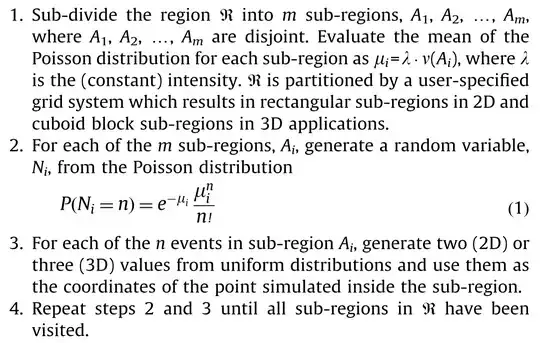Context:
Poisson point processes (PPP) are widely discussed in the literature.
In the following figure a framework to generate two-dimensional PPP is demonstrated. First the area being studied (part of space which can be in 1D, 2D, 3D, ..., in our example is a 2D shape i.e., square) is divided into cells (gridding). Second, for each cell a random number n is drawn from a Poisson distribution with density of $\lambda$. Then within each cell n points are uniformly distributed. The resulting point pattern is a homogeneous point process.
Questions:
- Is the described method correct?
- If we shuffle the numbers within area, then is it still a valid PPP?
- Is it valid for further dimensions?
Please check whether the following steps are the same as I illustrated.


note Please read the following invaluable answers and comments which are appreciable. I don't repeat them here. However I put a confusing point here hopefully to be solved by a gentle explanation.
The second point is if we do realization only once then why should we call it Poisson where it is simply a uniform-random-values?